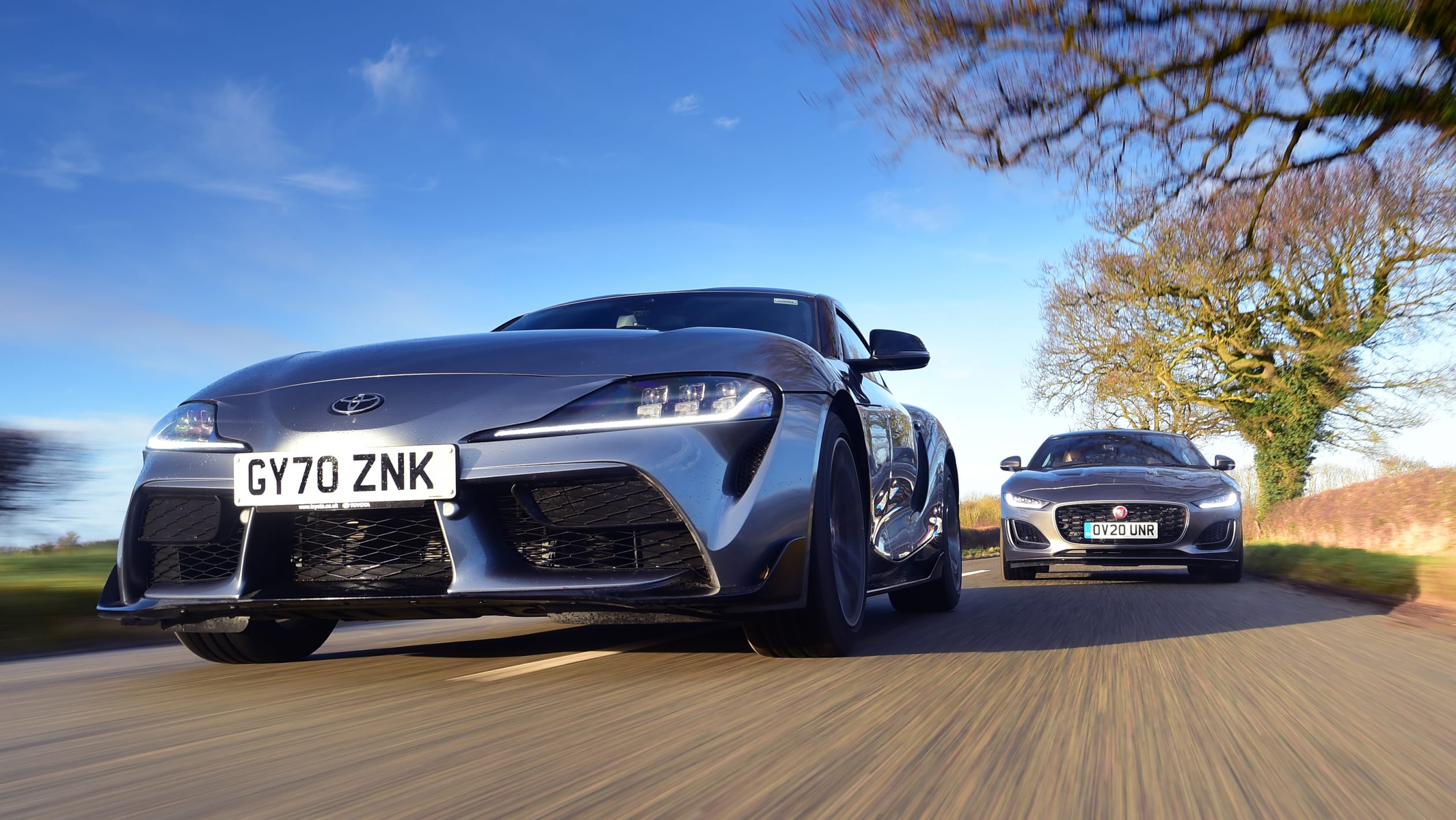Curiosity bites: Is the four-pot Toyota Supra better than the new four-pot Jaguar F-Type?
Toyota GR Supra launched to great fanfare in 2019, and can cut it with great-driving sports cars like the Porsche 718 Cayman, while matching the image and usability of models such as Audi’s TT.
Although it has less power, this new 2.0-litre GR Supra weighs less than its brawnier brother, so it could be the keen driver’s choice. In fact, you can read our review here.

To test its credentials fully, we’re pitting it against the facelifted Jaguar F-Type P300. This tag denotes that under the long bonnet of Jaguar’s sports car is a 2.0-litre four-cylinder turbocharged engine to match the Supra’s set-up. But which two-seat sports car does downsizing best? Let’s find out.
Toyota Supra
Design & engineering
It’s well documented that Toyota collaborated with BMW to produce the GR Supra. As with the six-cylinder car, that means this 2.0-litre four-cylinder turbocharged model uses a BMW-sourced engine and gearbox.
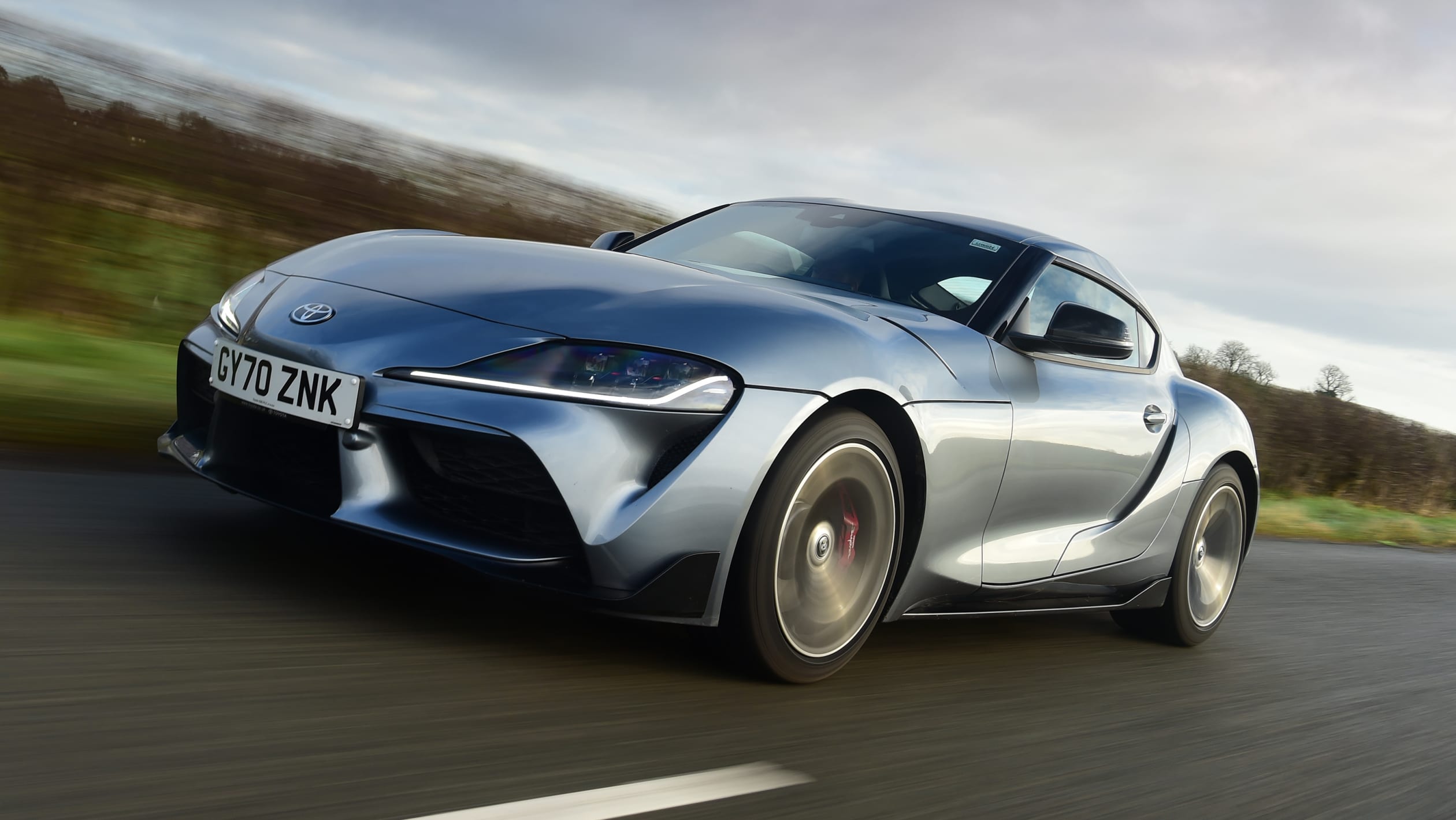
Here, the engine produces 189kW and 400Nm of torque. That first figure is 31kW less than the Jaguar offers, although torque is identical, but at 1395kg the GR Supra is 125kg lighter than the F-Type. Weight in a sports car is key, and this GR Supra is also 100kg lighter than its six-cylinder sibling.
Like the 3.0, this car has no manual option, but few modern sports cars offer this anyway. Power is sent to the GR Supra’s rear wheels through an eight-speed automatic gearbox and an active limited-slip differential – again, both BMW-sourced items.
The chassis is just as interesting as the powertrain. There’s less weight to manage, but the MacPherson strut front suspension and five-link rear axle are still controlled by adaptive dampers. There’s a Sport mode that changes their parameters, but for rough roads you might prefer to leave it in the default set-up.
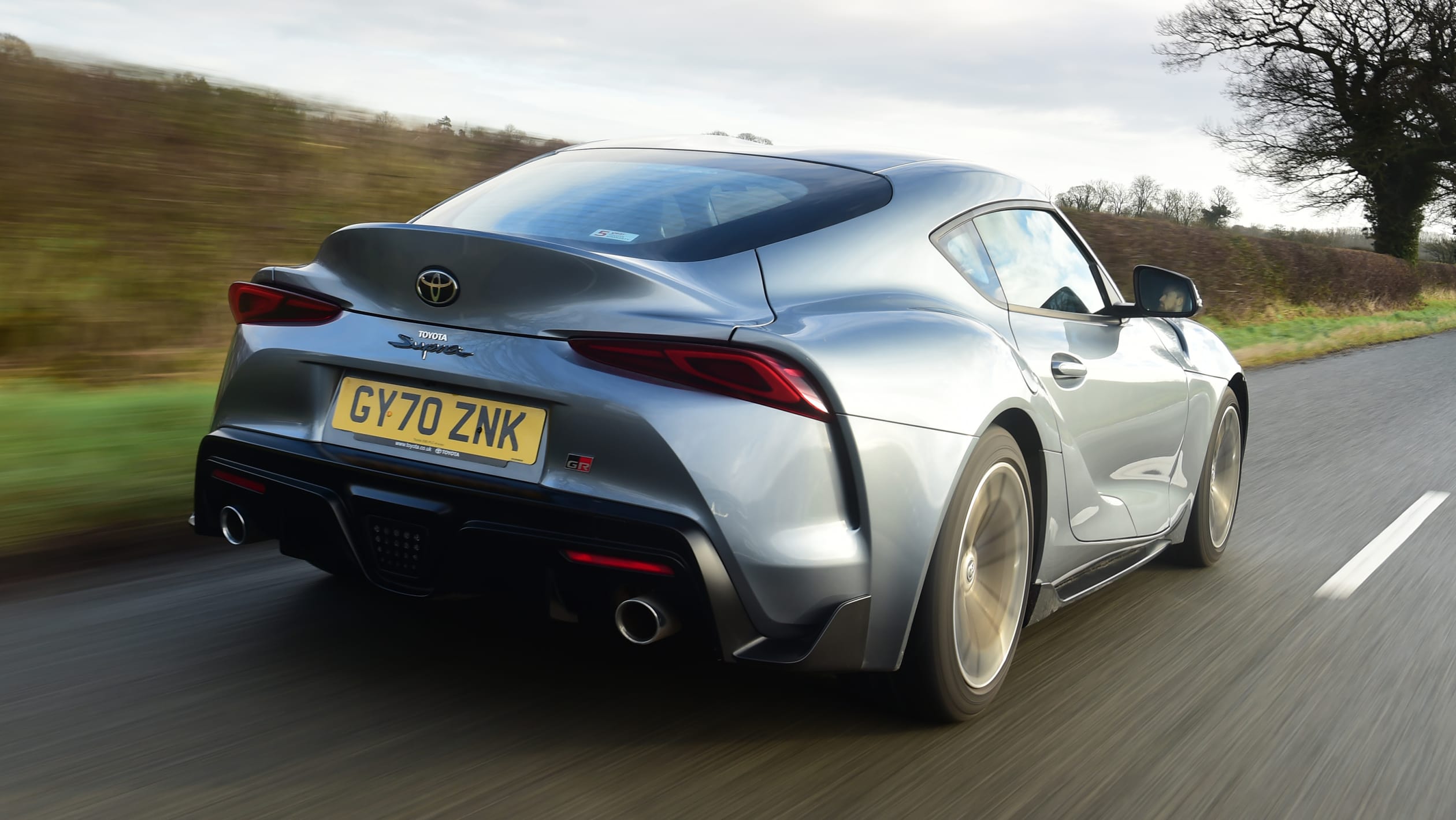
Moving from a straight-six to a four-cylinder obviously has implications when it comes to sound, too, just as downsizing from a V8 to the P300’s engine does in the Jag. But both cars feature active exhausts and enhance the engine’s sound through the speakers in the sportier settings.
Otherwise, the Pro-spec GR Supra features almost everything you could want. Leather isn’t offered, though – it’s not even on the options list.
Driving
Although the GR Supra lacks some of the Jag’s punch, on the move it feels faster and more urgent, while the engine responds more keenly and revs harder too.
Despite its power deficit – some of which is clawed back by its lower kerbweight – the Toyota is actually faster than the Jaguar from 0-100km/h; the two cars take 5.2 and 5.7 seconds respectively. Traction is better in the Toyota, which is helped by that active differential, but the bigger benefit is that it gives the car greater agility.
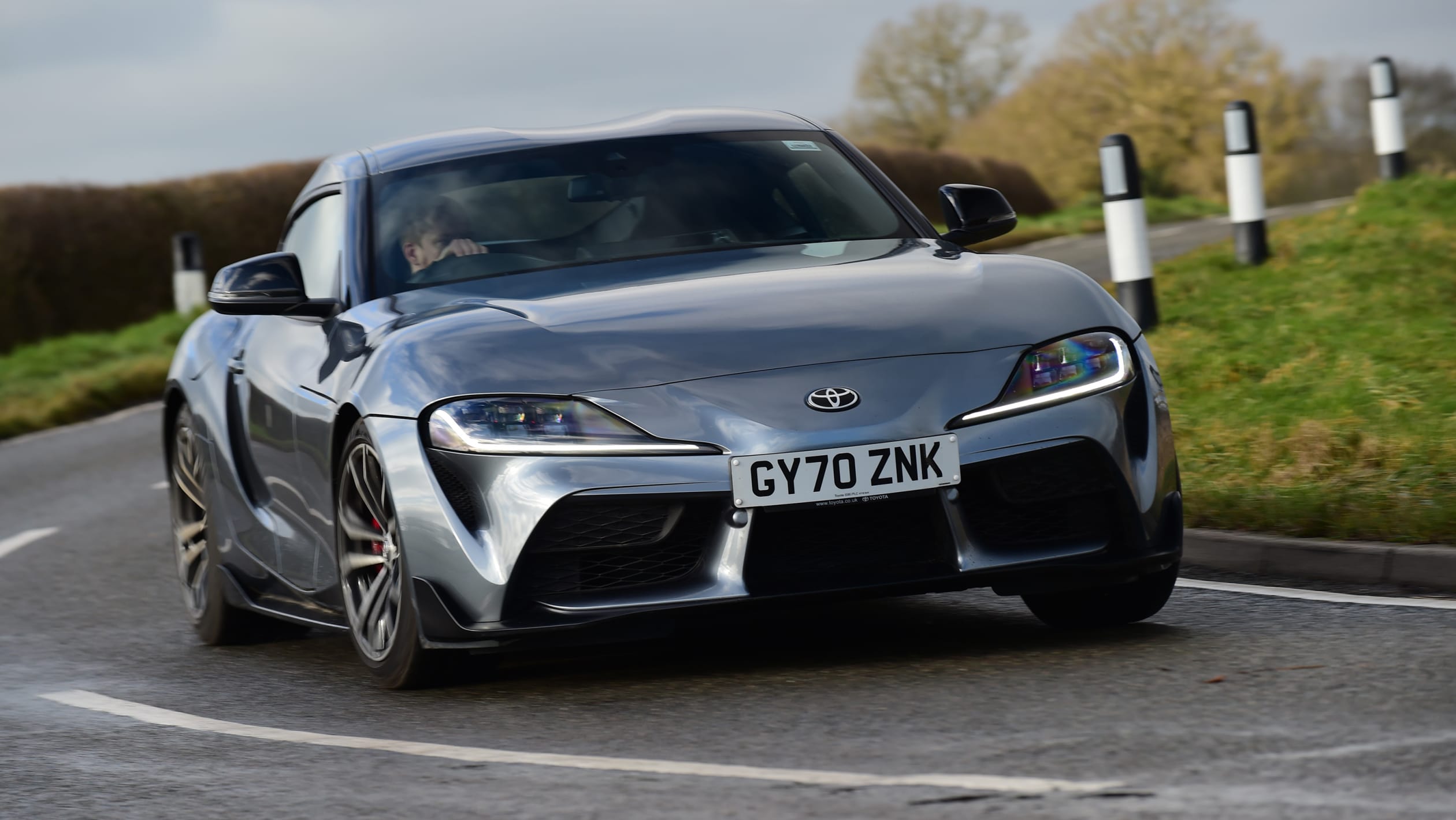
There’s not much in the way of feel or feedback, while Sport mode doesn’t help this, but the GR Supra’s steering is quick. The active diff helps to turn the car as well, so it feels very keen to dart towards an apex. There’s a good amount of grip to support these responses, too.
However, even in standard mode the suspension – particularly the rear – thumps and hops over sharp depressions and bumps. It just lacks the fine control you get in a Porsche 718 Cayman, for example, but the F-Type isn’t immune from this dynamic trait.
The GR Supra’s balance is sweet, though. With the long bonnet stretching out in front of you, it feels like you sit close to the rear axle, and this gives you a good sense of what’s going on. We just wish it were slightly less prone to hopping around on its suspension along the kind of writhing, twisting B-roads a sports car like this should devour.
Practicality
The GR Supra is a physically smaller car than the F-Type, with a more compact footprint, but it also really feels it. The cabin is much tighter than the Jag’s, while the letterbox-style windscreen means visibility could be better. Sometimes the A-pillars get in the way of spotting your apex in corners, too.
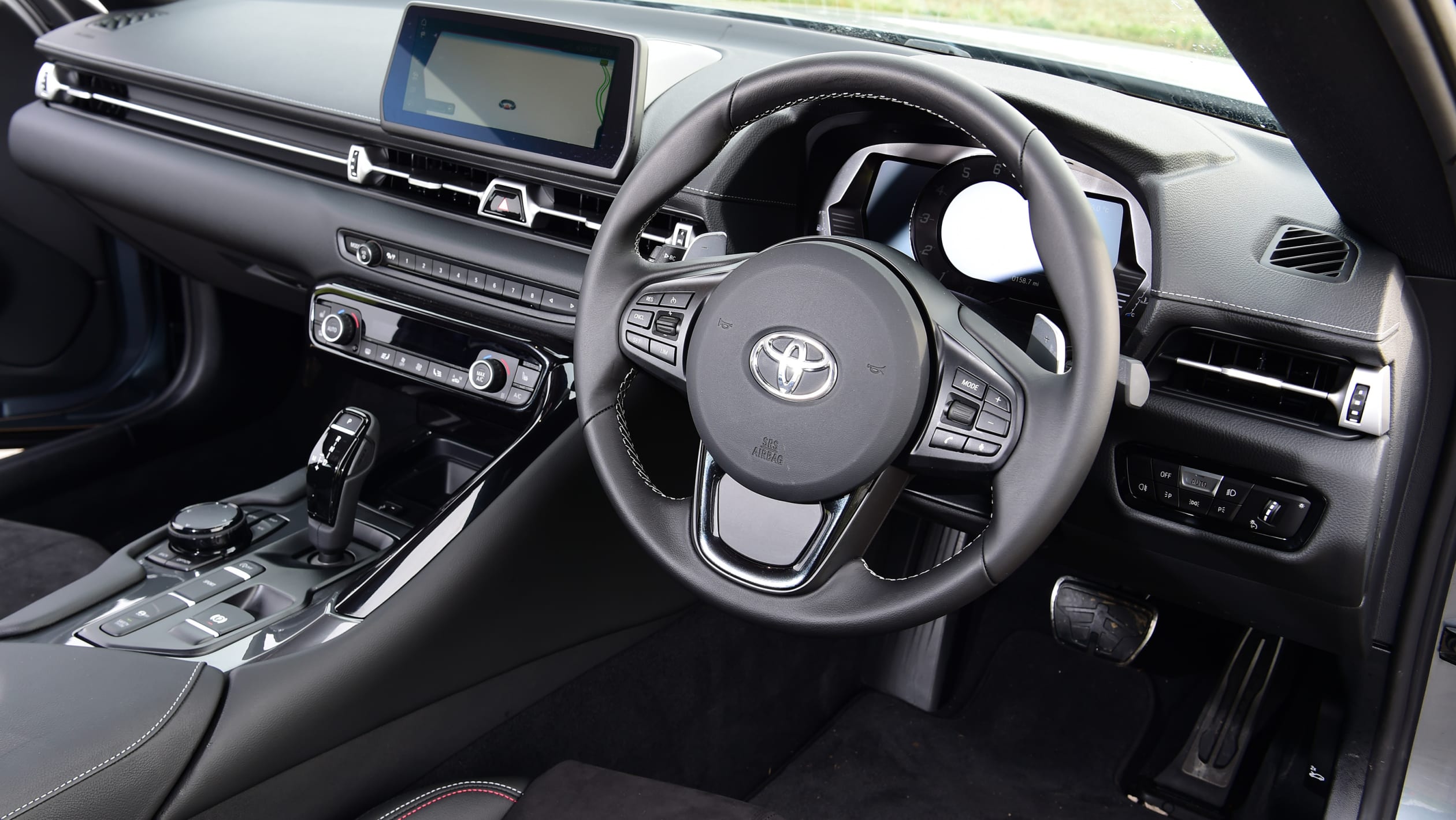
Rear visibility isn’t great either (a rear camera is fitted as standard to help with manoeuvring, but not parking sensors), but that’s the price you pay for the arresting design and swoopy roofline. We’ll leave it up to you to decide which car you prefer the looks of.
The Toyota offers 290 litres of boot space, which is less than you’ll find in the Jag, but you can access the load bay from inside because the rear bulkhead is low, while the large hatch means that loading is easier than you might think.
Testers’ notes
“The GR Supra doesn’t feel as premium as the F-Type. These two cars are natural performance rivals, but the Toyota is cheaper, and it feels it.”
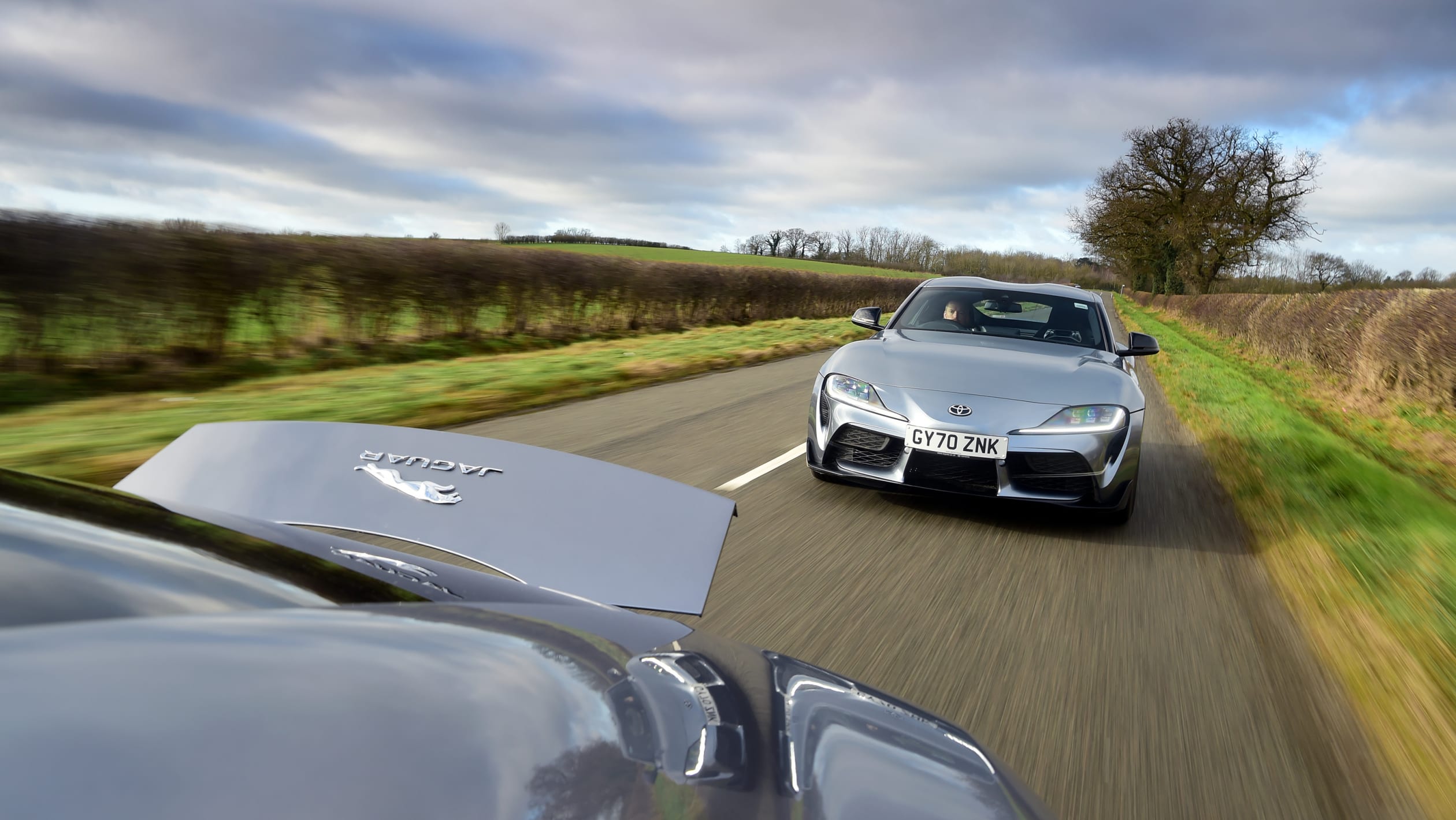
Jaguar F-Type
Design & engineering
When it comes to Jaguar’s sports car history, 2021 is a big year for the firm, because the iconic E-Type celebrates its 60th anniversary. But here it’s the turn of the F-Type to battle it out against rivals like the GR Supra 2.0.
The latest updates added a new nose inspired by the I-Pace electric SUV, but the formula isn’t all that different under the skin. The car’s sharply styled aluminium body still houses a 2.0-litre four-cylinder turbo petrol unit from Jaguar’s Ingenium family.
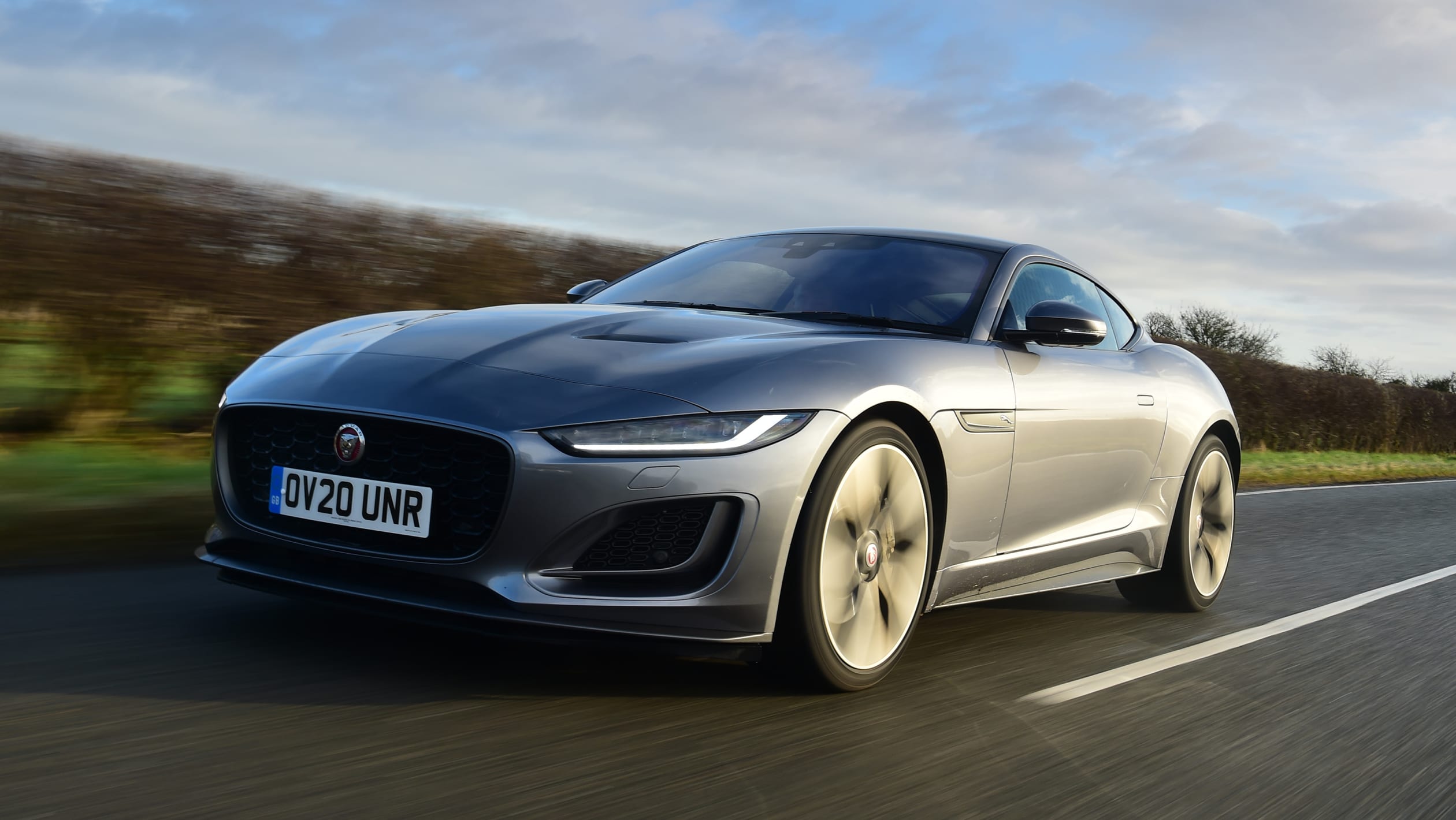
There’s more power than in the GR Supra, at 221kW, but the 400Nm of torque is identical to the Toyota’s output. Yet despite the Jag’s aluminium construction, it weighs more, at 1520kg.
An eight-speed automatic sends power to the rear wheels only. As with the GR Supra, there’s no all-wheel-drive option, although the V8-engined P450 is available in AWD form, while the F-Type R only comes with four-wheel drive. Unlike the Supra, the Jaguar features an open rear differential with torque vectoring by braking to help improve its agility.
There is an active exhaust, but only passive suspension dampers. However, we’ve seen with the GR Supra that Sport mode compromises the ride further, so given these two aren’t hardcore track cars, a well set-up passive system is easily competitive.
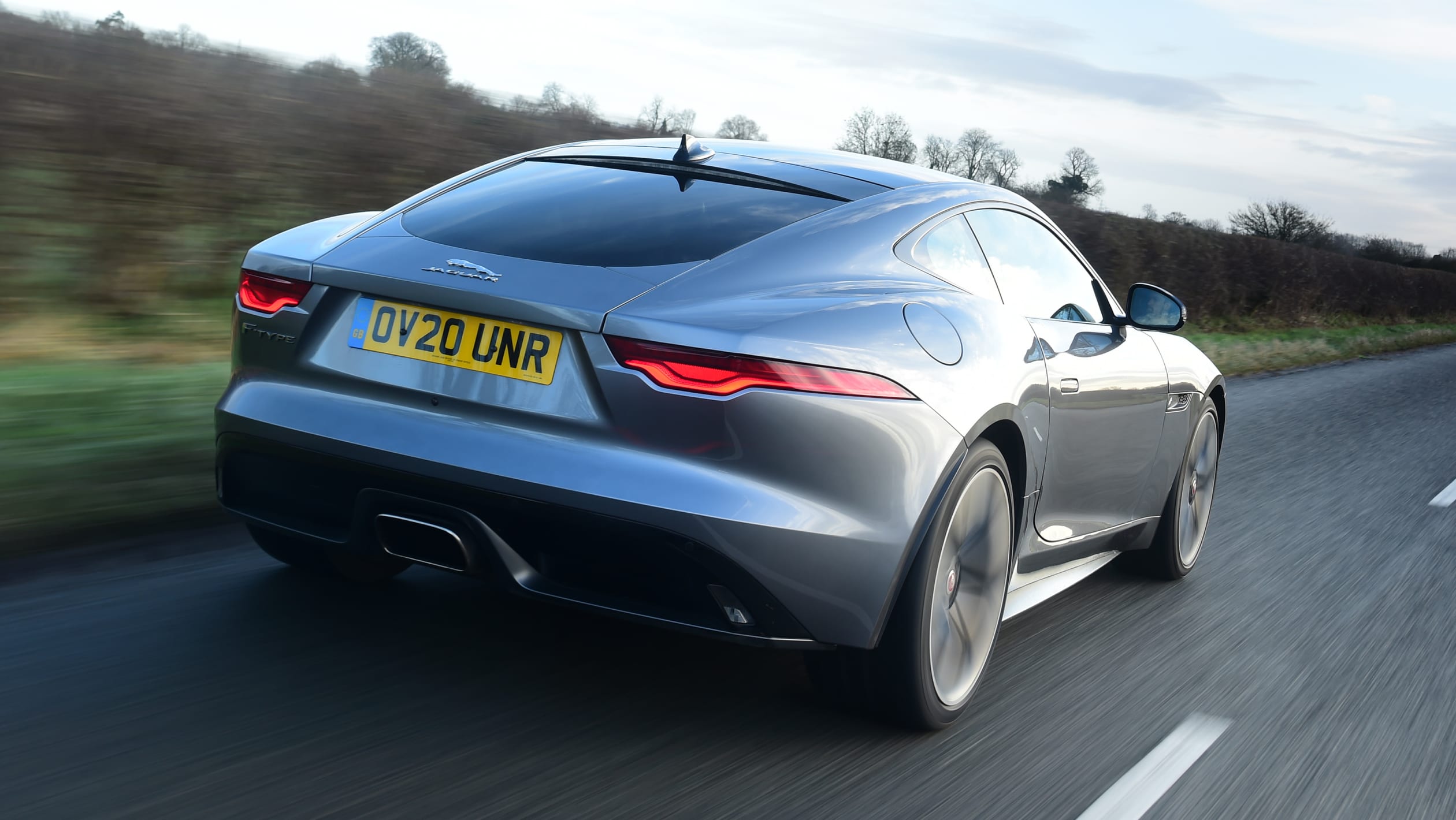
A quick recap of those styling tweaks: the car’s headlights are now wide and shallow, so the bonnet and grille are also new, while the fresh tail-light design features a more angular light signature.
Inside there’s a digital dash and more technology than ever. The materials are high-quality and the car feels a cut above the GR Supra in many areas.
Driving
The Jag feels more of a GT than the Toyota, because the ride is more comfortable. It proves that its passive suspension is a match for the Toyota’s adaptive tech.
Maybe it’s the additional weight or it’s the F-Type’s extra length in the wheelbase, but it feels like it reacts less aggressively to bumps than the GR Supra in some situations. However, there is a lot of road noise in both, and the Jag is just a little louder.
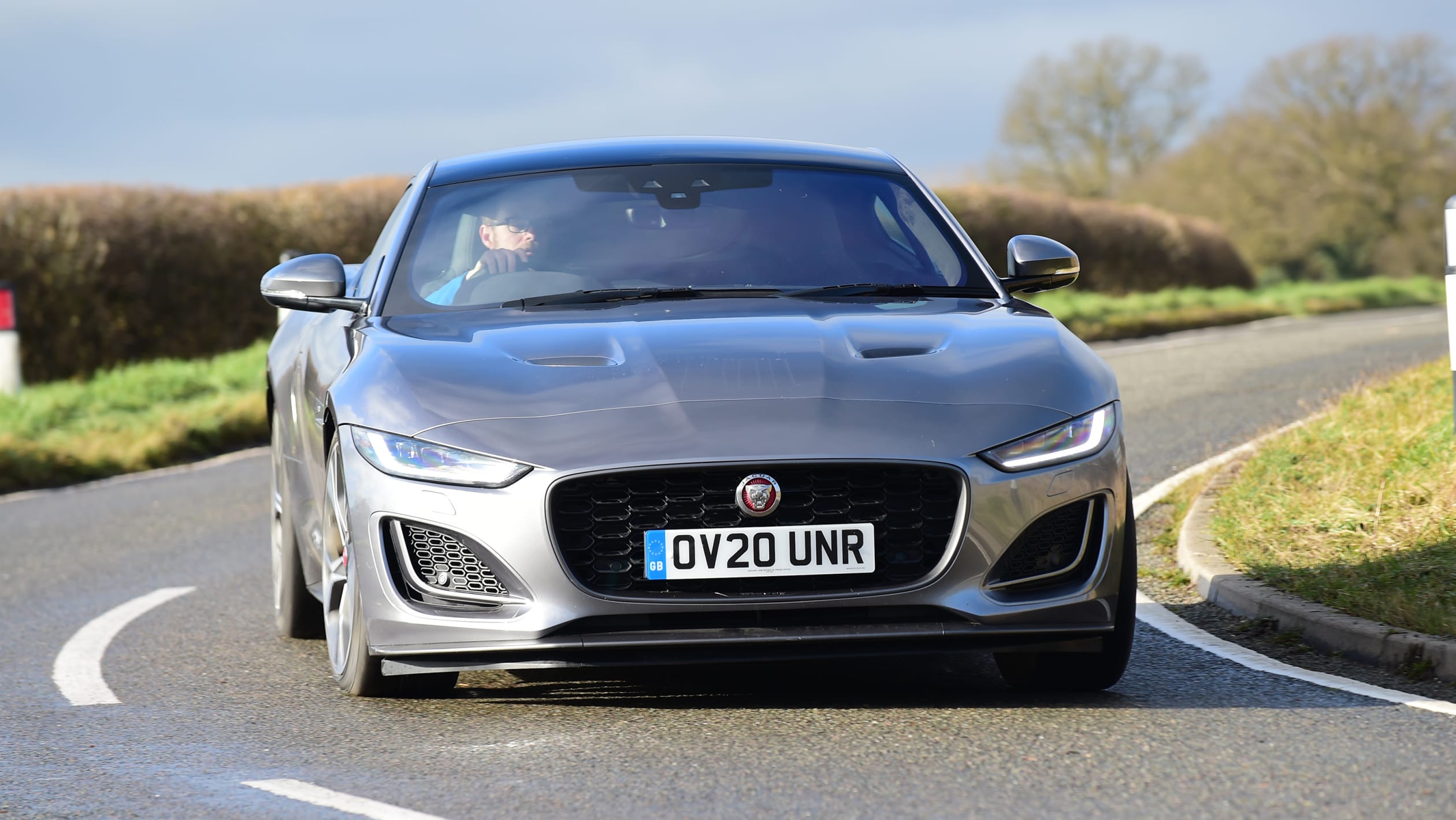
It still makes a case as a sound sports car though, because the F-Type’s steering is quick, with a good rate of response that means the long nose darts into turns with the same level of eagerness as the GR Supra’s.
However, the Jaguar doesn’t feel quite as controlled in quick turns or coming out of tighter corners: when you apply the power, the lack of a limited-slip differential is obvious. The F-Type’s traction is not as good, and it’s keener to spin up an inside wheel, wasting power.
The gearbox is a match for the GR Supra’s though, shifting smoothly as an auto and offering snappy changes in manual mode, although both cars suffer from a snatchiness that the best dual-clutch units don’t.
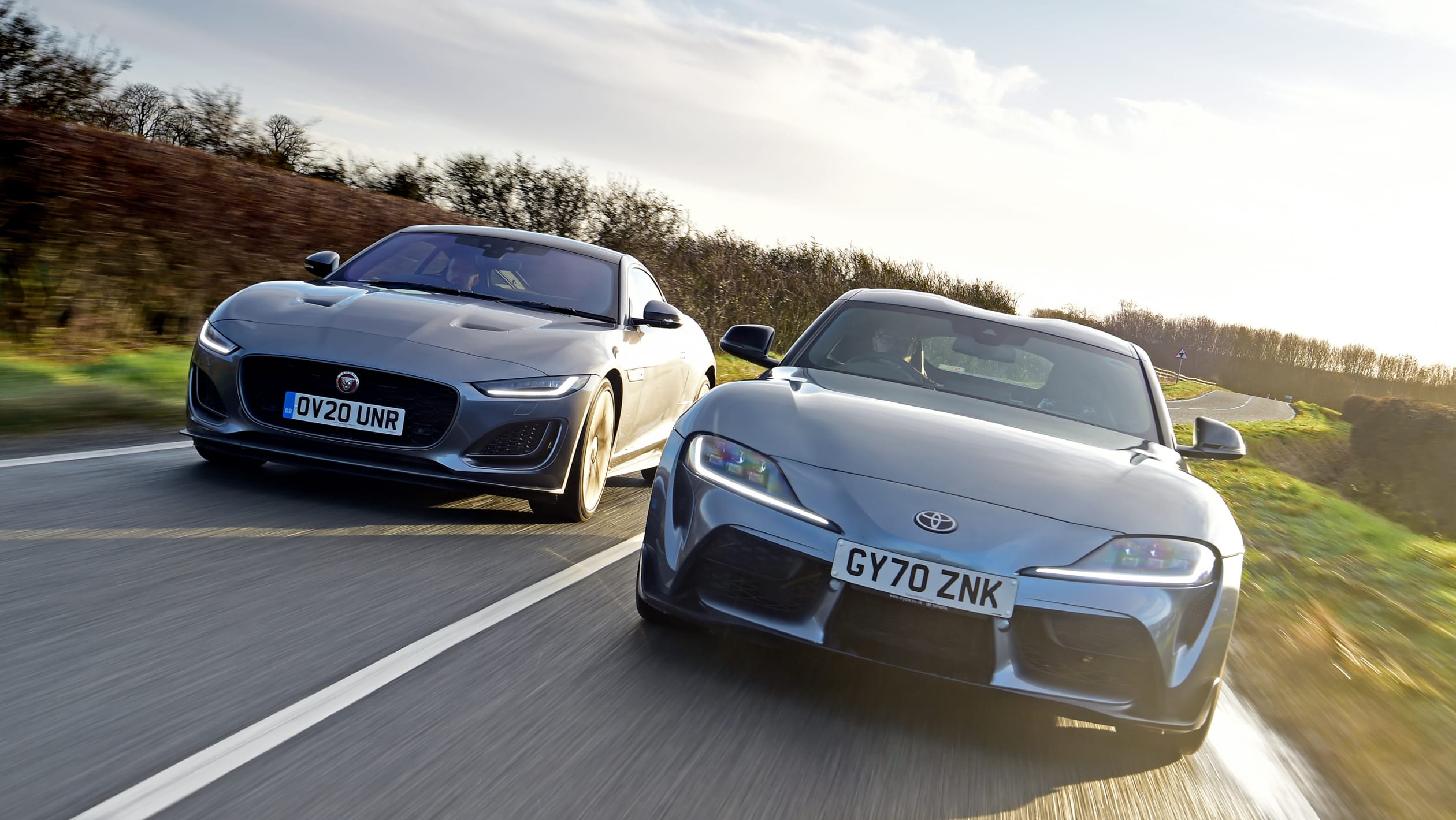
Overall though, the F-Type strikes a good balance between refined GT and engaging sports car. But as with its competitor, it doesn’t quite excel in any one area. It’s biased more towards the former than the latter, whereas the Supra is the other way round.
Practicality
With 336 litres of luggage space, the Jag offers more load volume than the Toyota, but the GR Supra’s boot is deeper.
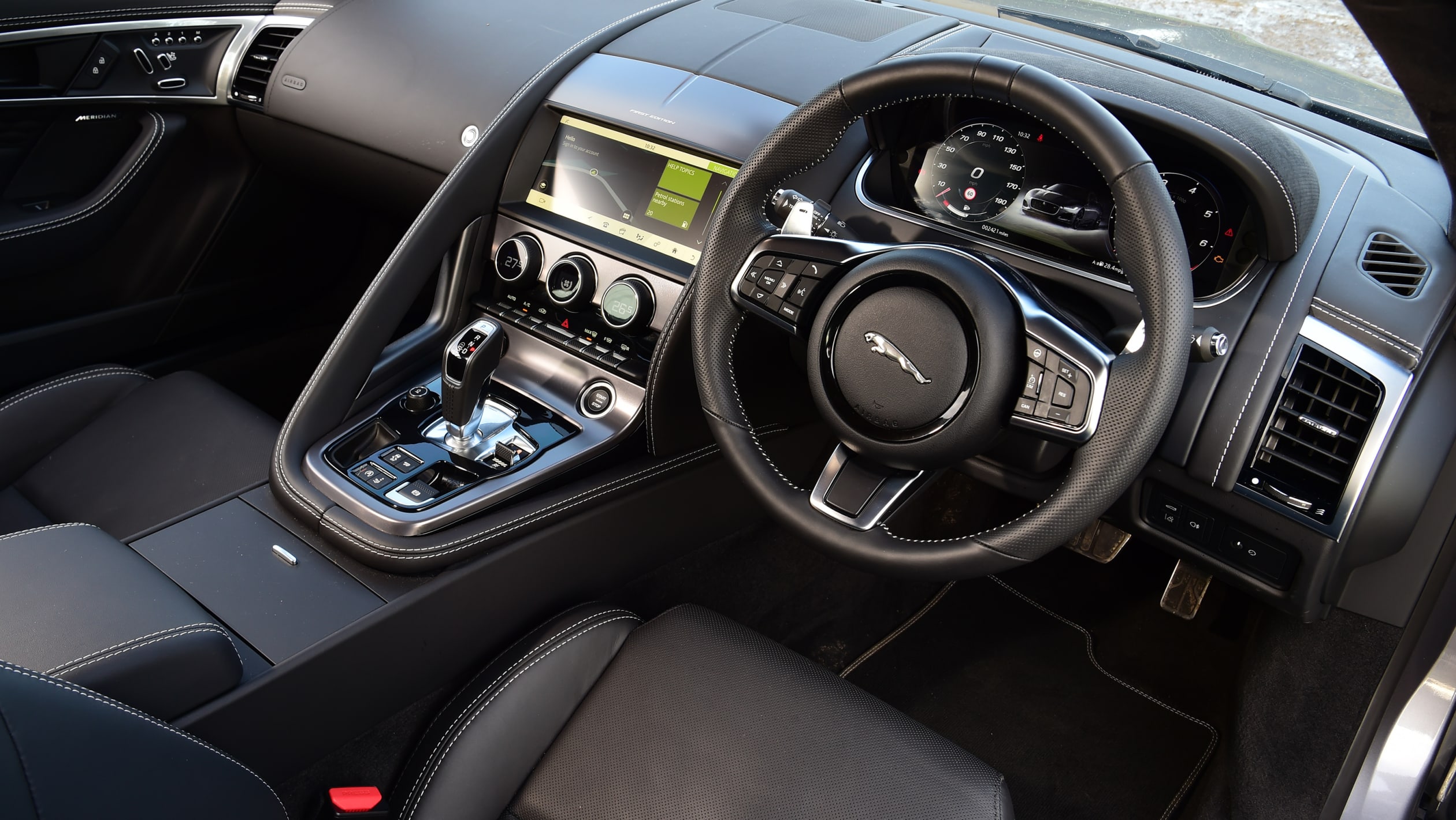
The F-Type suffers from a similar visibility problem to the Toyota, too, but the Jag benefits from parking sensors. Its A-pillars get in the way in some corners, but at least the long bonnet and front wings are well defined, so you can place it on the road with confidence. The same applies to the Toyota, though.
Inside, the Jag’s cabin feels more spacious, but there aren’t really any additional storage areas, because the dash protrudes towards you. But there are a few nice design touches, such as the grab handle that divides the driver and passenger zones.
Testers’ notes
“There’s no V6 F-Type any more; if you want a bigger engine you’ll have to go for the V8 P450 and F-Type R. Both easily outgun the six-cylinder GR Supra.”
Verdict
First place: Toyota Supra

The GR Supra just edges this contest thanks to its affordability (both to buy and run) and a more engaging drive. A big part of that is the engine, because it feels keener and more alert than the F-Type’s four-cylinder unit. The GR Supra handles sweetly and feels fun, but its price tag is reflected in the fact it’s not as premium inside, even if gets a similar level of tech. We’d still go for the 3.0-litre model, though.
Second place: Jaguar F-Type
P300 spec isn’t quite the F-Type’s sweet spot. It’s still a great and individual front-engined, rear-drive sports car that offers something unique in the class thanks to its premium feel, stunning design and a great balance between ride and handling. The tech updates help, but the engine doesn’t offer the grunt the F-Type deserves. However, the car’s image is a cut above the Toyota’s, that’s for sure.
Also consider…
Porsche Cayman
- Model: Porsche 718 Cayman PDK
The 718 Cayman is available as a manual and a PDK dual-clutch auto. It’s even better to drive than the Supra, and arguably more exotic than the Jag. The engine isn’t great, but this PDK-equipped model is a brilliant downsized sports car.
Alpine A110
- Model: Alpine A110 Pure
As the name suggests the Alpine A110 is one of the best-driving sports cars in this trim. It’s lightweight and responsive; these two are a great pair of mid-engined rivals.




